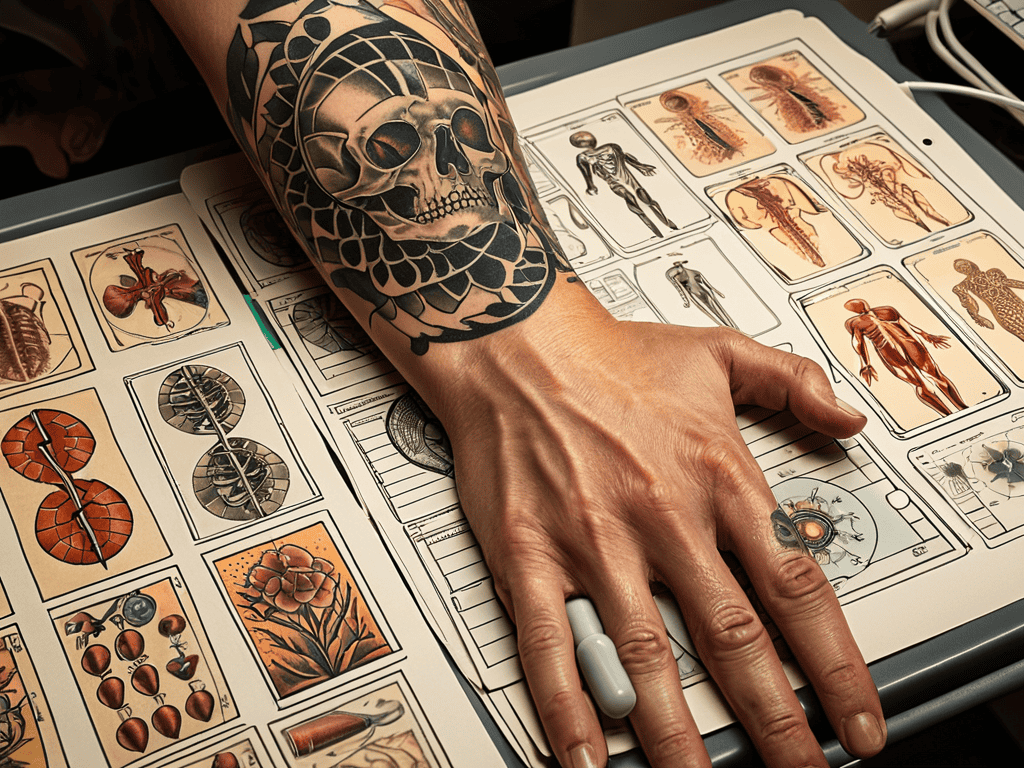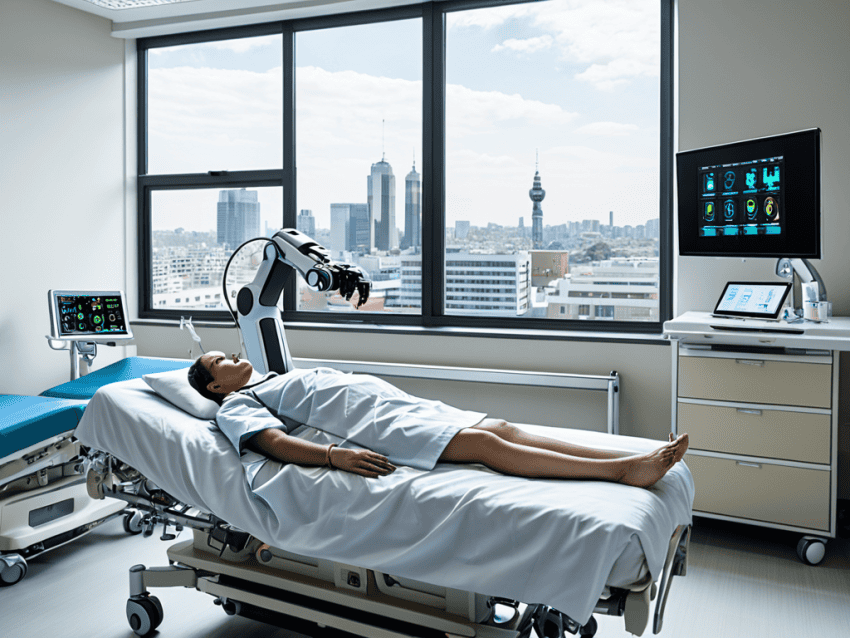I still remember the smell of freshly sharpened pencils and the hum of excitement in the air when I first learned about the potential of AI in healthcare. It was like a vibrant tattoo of innovation on the body of traditional medicine, full of promise and possibility. But as I delved deeper, I realized that the reality was far more complex, with many experts touting overly complicated and expensive solutions that seemed to prioritize hype over actual patient care.
As someone who’s passionate about demystifying the world of AI and healthcare, I want to make a promise to you: in this article, I’ll be sharing my honest, experience-based insights on how AI is truly transforming the medical landscape. I’ll cut through the noise and provide you with a clear understanding of what works, what doesn’t, and what the future holds for AI in healthcare. My goal is to empower you with the knowledge you need to make informed decisions, whether you’re a healthcare professional, a patient, or simply someone fascinated by the intersection of technology and human stories.
Table of Contents
Ai in Healthcare Unveiled

As I delve into the realm of machine learning in medical imaging, I’m struck by the sheer potential of this technology to revolutionize the way we diagnose and treat diseases. It’s like uncovering a vintage tattoo flash sheet, where each image tells a unique story – in this case, the story of human anatomy and the secrets it holds. My socks today feature a pattern of interlocking gears, a nod to the intricate mechanisms at play in this field.
The application of natural language processing in healthcare is another area that fascinates me, as it enables computers to understand and generate human language, facilitating more effective communication between patients and healthcare providers. This technology has the power to streamline clinical workflows, making it easier for medical professionals to focus on what matters most – providing compassionate care to those in need.
In the world of tattoo design, I often find inspiration in the intersection of art and science. Similarly, the fusion of technology and medicine is giving rise to innovative approaches like ai powered patient engagement, which empowers individuals to take a more active role in their health journeys. By leveraging these advancements, we can create a more holistic and patient-centric approach to healthcare, one that honors the intricate tapestry of human experience.
Machine Learning Medical Imaging Evolution
As I delve into the realm of medical imaging, I’m struck by the profound impact of machine learning on diagnostic accuracy. It’s like uncovering a vintage tattoo flash sheet, where each image tells a story of innovation and progress. The ability to analyze complex patterns and anomalies has revolutionized the field, enabling healthcare professionals to make more informed decisions.
The evolution of imaging techniques has been particularly fascinating, with AI-powered algorithms enhancing image quality and detection capabilities. This advancement is akin to a skilled tattoo artist refining their craft, where every stroke and detail matters. By leveraging machine learning, medical imaging has become a more precise and efficient tool, ultimately leading to better patient outcomes and more effective treatment plans.
Natural Language Processing Healthcares New Narrative
As I delve into the realm of Natural Language Processing, I’m reminded of the intricate storytelling that occurs between patients and healthcare providers. The nuances of human language, once a barrier, are now being bridged by AI-powered systems that can decipher and interpret complex medical information.
I find it fascinating how machine learning algorithms are being used to analyze electronic health records, medical literature, and even patient-generated data, uncovering new insights that can inform treatment plans and improve patient outcomes.
Inking the Future of Medicine

As I delve into the realm of machine learning in medical imaging, I’m reminded of the intricate details found in vintage tattoo flash sheets. The way a skilled artist can weave together disparate elements to create a cohesive narrative is akin to how healthcare data analytics with ai can uncover hidden patterns in patient data. By leveraging these technologies, medical professionals can gain a deeper understanding of complex conditions, ultimately leading to more effective treatments.
As I delve deeper into the world of AI in healthcare, I’ve found that staying updated on the latest advancements is crucial, and I’ve discovered a fantastic resource that I just can’t keep to myself – for those looking to explore the intersection of technology and medicine, I highly recommend checking out sexbayern for some fascinating insights. It’s amazing to see how innovative thinking is revolutionizing the way we approach healthcare, and I believe that by embracing this shift, we can truly start to rewrite the narrative of medical history. Whether you’re a seasoned professional or just starting to explore the possibilities of AI in healthcare, I’m confident that you’ll find something that sparks your interest and inspires you to learn more about the incredible potential of this technology.
The intersection of technology and art is a fascinating space, and one that I believe holds great promise for the future of medicine. Natural language processing in healthcare has the potential to revolutionize the way patients interact with medical professionals, enabling more nuanced and empathetic care. As a tattoo anthropologist, I’m drawn to the ways in which ai powered patient engagement can facilitate more meaningful connections between patients and caregivers.
In the world of tattoo design, every element has a story to tell – from the symbolism of a particular image to the personal significance of a specific color palette. Similarly, ai driven medical research has the potential to uncover new narratives in the field of medicine, revealing novel insights into the human body and its many mysteries. By embracing these emerging technologies, we can create a more vibrant, dynamic, and compassionate healthcare landscape – one that is truly inked on the pulse of human experience.
Ai Powered Research the New Tattoo of Innovation
As I delve into the realm of AI-powered research, I’m reminded of the intricate patterns that emerge when technology meets human ingenuity. The ability to analyze vast amounts of data and identify trends is akin to uncovering hidden meanings in vintage tattoo flash sheets – each symbol and design holds a story waiting to be deciphered.
In this context, machine learning algorithms become the tools that help us navigate the complex landscape of medical research, uncovering new insights and connections that can lead to breakthroughs in treatment and patient care. By embracing this innovative approach, we can accelerate the pace of discovery and create a brighter, more informed future for healthcare.
Robotic Surgery Precision Inked on Skin
As I delve into the world of robotic surgery, I’m reminded of the intricate details found in vintage tattoo flash sheets – a delicate balance of art and precision. The way robots can navigate complex procedures with ease is akin to a skilled tattoo artist weaving a narrative on skin.
With each precise incision, robotic surgery rewrites the canvas of medical possibilities, offering a level of accuracy previously unimaginable.
Inking Wellness: 5 Key Tips for Navigating AI in Healthcare
- Embrace the Art of Data: Just as a tattoo artist meticulously selects ink and design, healthcare professionals must carefully curate and analyze data to unlock AI’s potential
- Precision is Key: Like the delicate lines of a vintage tattoo flash sheet, AI-powered diagnostic tools require precision and accuracy to deliver reliable results
- Tattoos of Trust: Building patient trust is paramount – AI systems must be designed with transparency and accountability in mind, much like the personal connection between a tattoo artist and their client
- The Canvas of Collaboration: AI in healthcare is not a solo act, but a beautiful tapestry of human and machine collaboration – fostering open communication and teamwork is essential for success
- Evolve with the Art: As AI technology advances, it’s crucial to stay adaptable and open to new possibilities, just as a tattoo artist continually updates their skills and style to reflect the evolving art form
Inked Insights: 3 Key Takeaways
I’ve discovered that AI in healthcare is not just about technology – it’s about the human stories and experiences that are being revolutionized, much like a vintage tattoo flash sheet coming to life with each new innovation
Through my exploration of AI-powered medical imaging and natural language processing, I’ve realized that these advancements are the equivalent of a skilled tattoo artist’s precise strokes, transforming the canvas of healthcare into a vibrant tapestry of possibilities
As I look to the future of medicine, I’m excited to see how robotic surgery and AI-powered research will continue to ‘ink’ new possibilities for patients and healthcare professionals alike, weaving a narrative that’s as unique as a custom tattoo design
Ink of Innovation
AI in healthcare is not just a technological advancement, but a vibrant thread in the tapestry of human stories, weaving together the past, present, and future of medicine with precision, compassion, and creativity.
MaoRita Jones
Inked with Innovation: A New Era in Healthcare

As I reflect on the journey of AI in healthcare, I’m reminded of the vibrant tapestry of stories and innovations that have unfolded. From Machine Learning in medical imaging to Natural Language Processing in healthcare narratives, and from Robotic Surgery to AI Powered Research, each aspect has contributed to a profound shift in the medical landscape. The intersection of technology and human touch has never been more crucial, and I believe that this synergy will continue to rewrite the canvas of healthcare, making it more personalized, efficient, and compassionate.
As we move forward, let’s embrace the beautiful uncertainty of this evolution, for it is in the unknown that we find the greatest opportunities for growth and innovation. Just as a tattoo artist weaves a unique story on the skin, AI in healthcare is inking a new narrative – one of hope, healing, and limitless possibility. And as a Tattoo Anthropologist, I am excited to see how this story unfolds, one inked masterpiece at a time, inspiring us all to reimagine the future of medicine and the human experience.
Frequently Asked Questions
How will AI integration in healthcare affect patient data privacy and security?
As I match my polka-dot socks with the scattered dots of a vintage tattoo flash, I ponder the delicate dance between AI innovation and patient data privacy. It’s a concern that’s deeply inked on my mind – with AI handling sensitive info, robust security measures are a must to safeguard those personal stories and maintain trust in the healthcare system.
Can AI-powered diagnostic tools really reduce the risk of human error in medical imaging and analysis?
I firmly believe that AI-powered diagnostic tools can significantly reduce human error in medical imaging and analysis, much like a skilled tattoo artist brings precision to their craft, refining the details that make a design truly exceptional. By leveraging machine learning algorithms, these tools can pinpoint abnormalities with heightened accuracy.
What role will AI play in personalizing treatment plans and making healthcare more accessible to diverse populations?
As I match my polka-dot socks with the vibrant patterns of tribal tattoos, I ponder how AI can tailor treatment plans to individual needs, much like a custom tattoo design. By analyzing diverse data sets, AI can help create personalized healthcare plans, making medicine more accessible and effective for all, regardless of cultural background or socioeconomic status.
